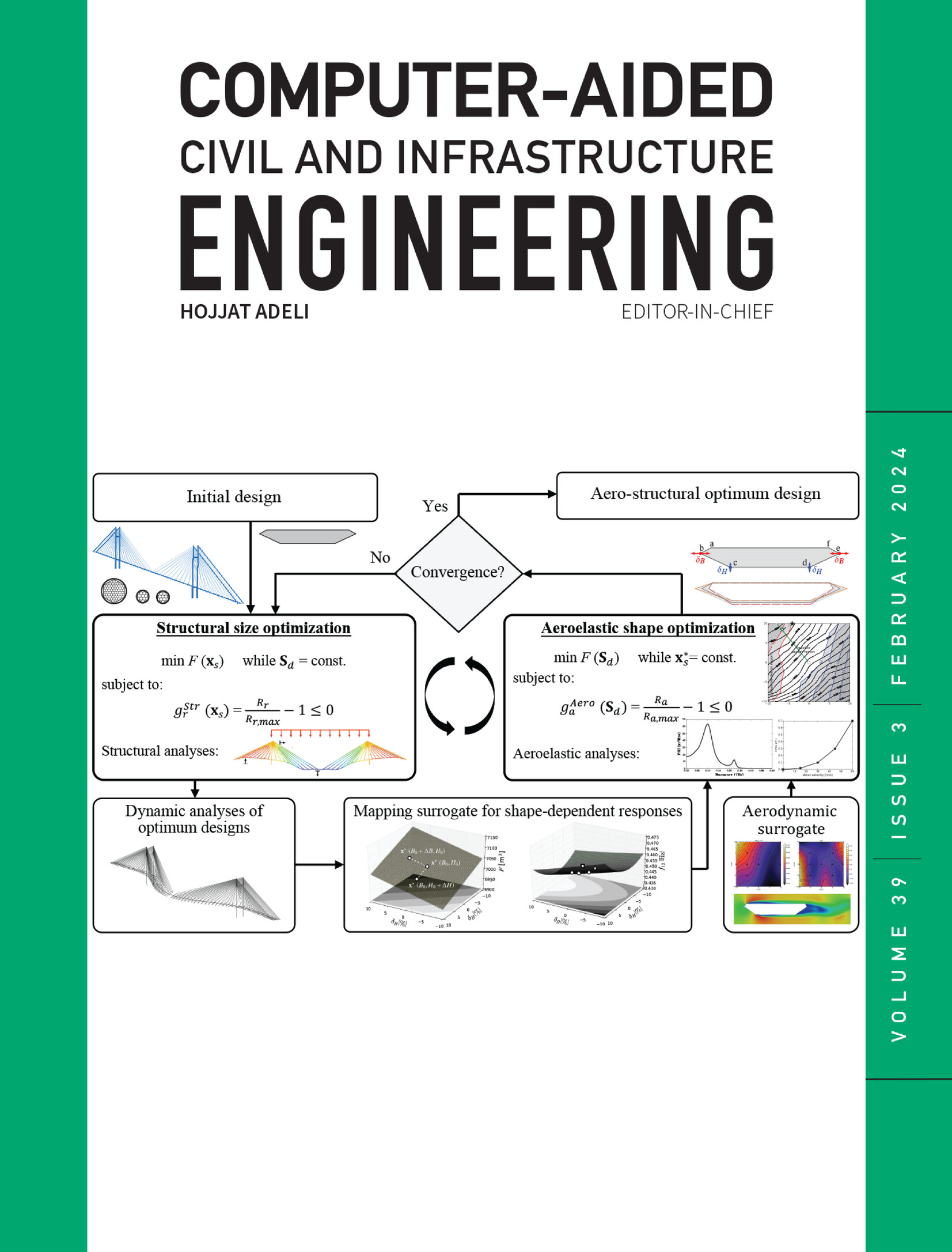An interval prediction system for track irregularity after tamping based on multi-module machine learning and pointwise scaling approach
IF 8.5
1区 工程技术
Q1 COMPUTER SCIENCE, INTERDISCIPLINARY APPLICATIONS
引用次数: 0
Abstract
Predicting changes in track irregularity after tamping is important for assisting maintenance decisions and improving construction efficiency. To date, most prediction methods lack consideration for the uncertainties related to tamping effects. To fill this gap, a multi-module prediction interval system composed of feature selection, interval scaling, and intelligent predictor has been constructed. The feature selection module integrates the processes of relevance, redundancy, complementarity, and weighting. The interval scaling module assigns scaling factors to each point in a data-driven manner, offering great flexibility. Research found that the composite model has significant advantages over traditional models, improving the interval coverage probability by 5.83%–40.62%. It can accurately predict the track relative smoothness after tamping, with the R2 between the measurement and the prediction of the 60 m mid-chord offset reaching 0.95. This model can serve as a reliable and feasible tool for predicting the static irregularity of ballasted tracks after tamping.基于多模块机器学习和点尺度法的轨道夯实后不规则度区间预测系统
预测夯实后轨道不平整度的变化对辅助维修决策和提高施工效率具有重要意义。迄今为止,大多数预测方法都没有考虑到与夯实效应有关的不确定性。为了填补这一空白,构建了由特征选择、区间缩放和智能预测器组成的多模块预测区间系统。特征选择模块集成了相关性、冗余性、互补性、加权等过程。区间缩放模块以数据驱动的方式为每个点分配缩放因子,提供了极大的灵活性。研究发现,复合模型较传统模型具有显著优势,区间覆盖概率提高5.83% ~ 40.62%。能够准确预测夯实后轨迹的相对平滑度,60 m中弦偏移量的测量值与预测值的R2达到0.95。该模型可作为预测夯实后有碴轨道静不规则度的可靠、可行的工具。
本文章由计算机程序翻译,如有差异,请以英文原文为准。
求助全文
约1分钟内获得全文
求助全文
来源期刊
CiteScore
17.60
自引率
19.80%
发文量
146
审稿时长
1 months
期刊介绍:
Computer-Aided Civil and Infrastructure Engineering stands as a scholarly, peer-reviewed archival journal, serving as a vital link between advancements in computer technology and civil and infrastructure engineering. The journal serves as a distinctive platform for the publication of original articles, spotlighting novel computational techniques and inventive applications of computers. Specifically, it concentrates on recent progress in computer and information technologies, fostering the development and application of emerging computing paradigms.
Encompassing a broad scope, the journal addresses bridge, construction, environmental, highway, geotechnical, structural, transportation, and water resources engineering. It extends its reach to the management of infrastructure systems, covering domains such as highways, bridges, pavements, airports, and utilities. The journal delves into areas like artificial intelligence, cognitive modeling, concurrent engineering, database management, distributed computing, evolutionary computing, fuzzy logic, genetic algorithms, geometric modeling, internet-based technologies, knowledge discovery and engineering, machine learning, mobile computing, multimedia technologies, networking, neural network computing, optimization and search, parallel processing, robotics, smart structures, software engineering, virtual reality, and visualization techniques.

 求助内容:
求助内容: 应助结果提醒方式:
应助结果提醒方式:


